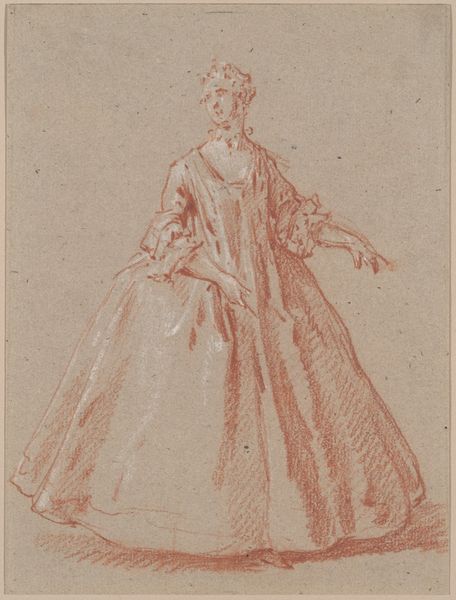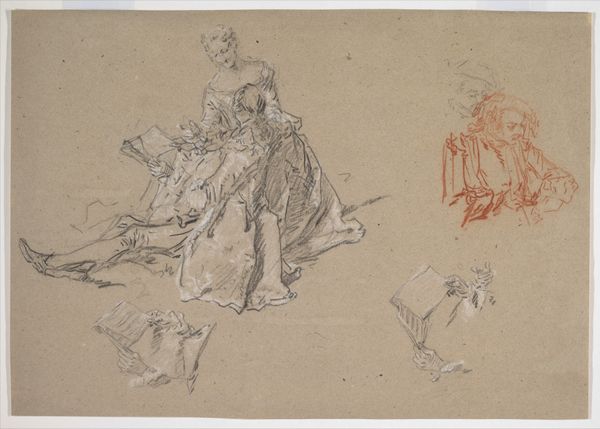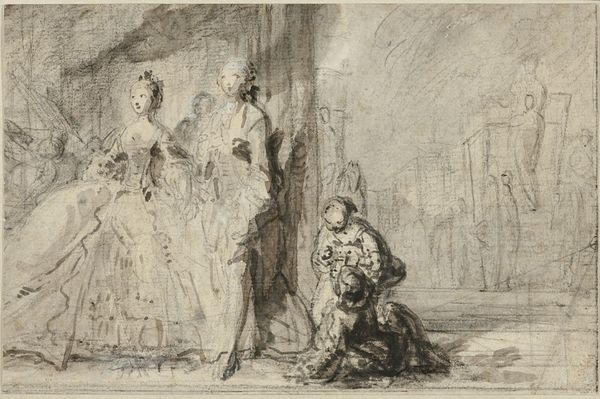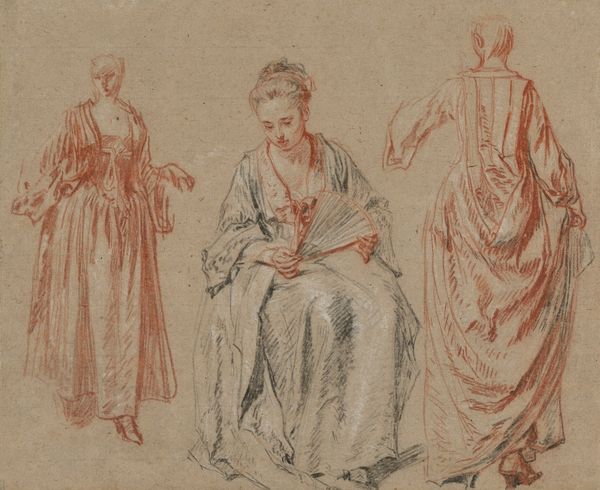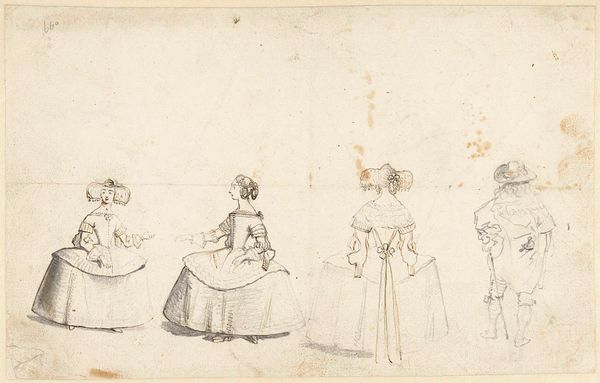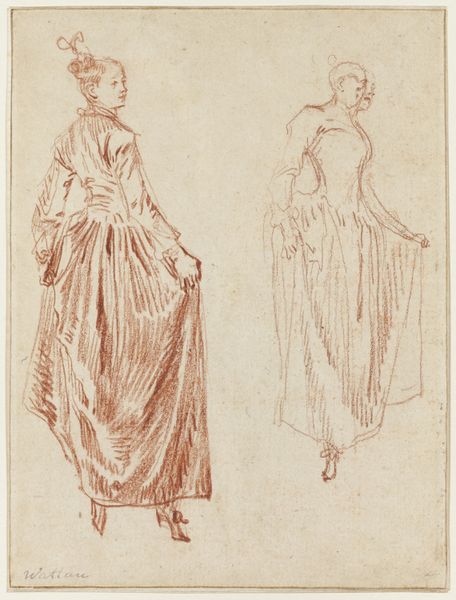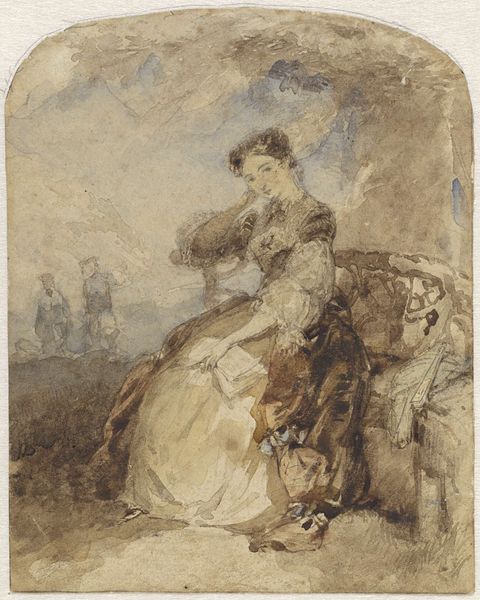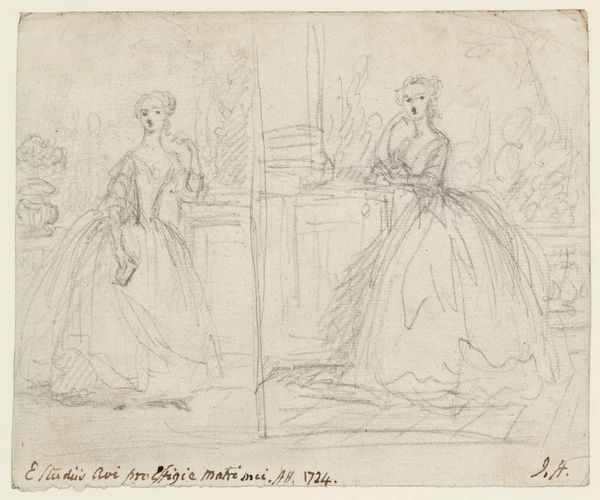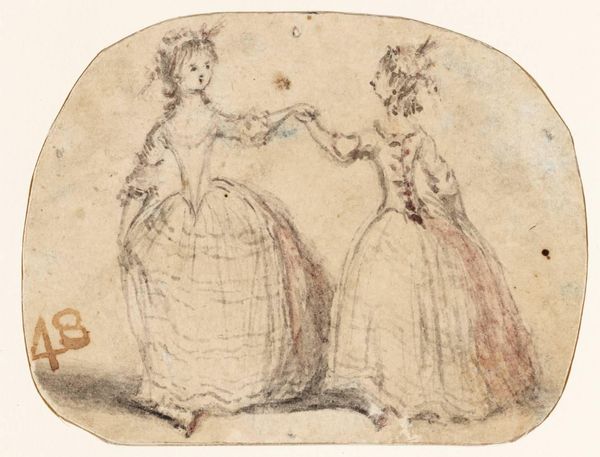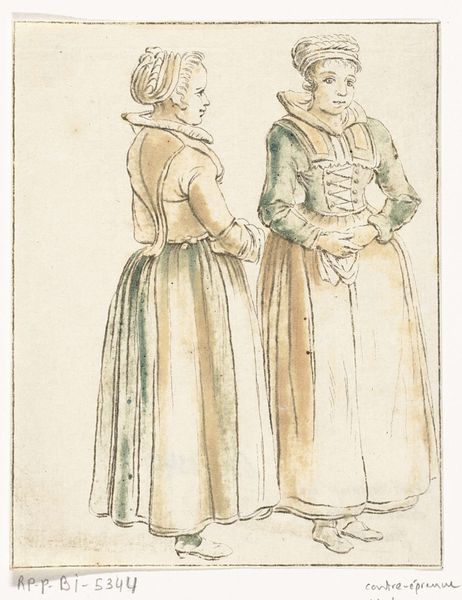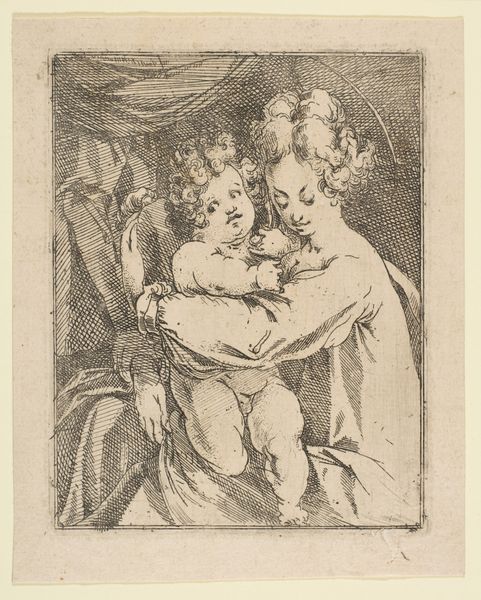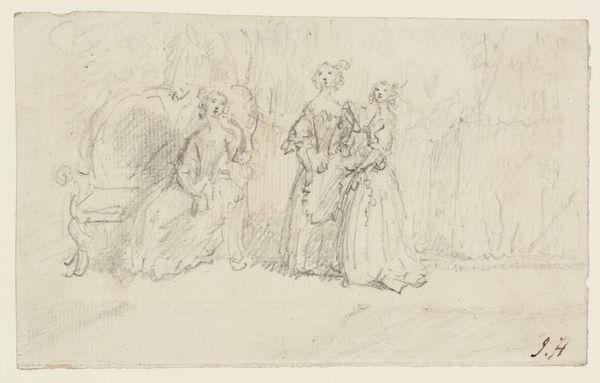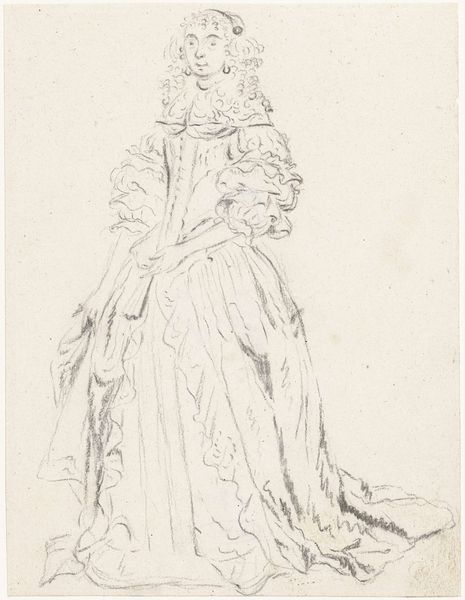
drawing, paper, pencil, pen
#
portrait
#
drawing
#
baroque
#
paper
#
pencil
#
pen
#
genre-painting
#
history-painting
Dimensions: overall: 18.2 x 29.5 cm (7 3/16 x 11 5/8 in.)
Copyright: National Gallery of Art: CC0 1.0
Curator: At first glance, this feels almost like a snapshot, capturing a fleeting moment between these two figures. Editor: Indeed. What we're looking at is Nicolas Lancret's drawing, "Two Elegant Women in Polish Dress," dating from around 1723. He employed pen, pencil, and paper in its creation. The very act of documenting specific garments is interesting, given that fashion was such a powerful cultural indicator in 18th-century Europe. Curator: Absolutely. You can almost feel the weight and texture of the fabric despite it being a drawing. I'm especially drawn to how the shimmering effects are achieved. What pencils did they have at that time, were they the same ones that are used today or how were they fabricated? Editor: I suspect it represents an imagined Polish style more than literal accuracy, which becomes clear considering Poland's volatile political landscape. The imagery would conjure a particular kind of exoticism and luxury to the audiences of the time. Curator: Yes, exoticism clearly sells. So, who consumed images like these? And what’s the economic implication for these drawings to be sold instead of prints at the time, what are we supposed to see if the author goes into such level of detail with each one of them. What does it represent, the end of one era or the promise of something new and unexplored. Editor: Wealthy patrons mostly, eager for glimpses into fashionable life and idealized portrayals of elegance. This could inform, in many ways, how they perceive or wish to portray their own personas. Curator: And does it, really? How powerful is this sort of illustration that influences entire lives of the elites? Is it even a glimpse of real life? Because there are no records about the two, other than the title, how did this narrative even come to existence, and what is our source of truth. Editor: Those are unanswerable questions perhaps, but the artwork raises a critical understanding of 18th-century identity, spectacle, and even power structures. Curator: Interesting perspective; it gives a tangible sense of their world, even across centuries. Editor: Precisely, and it pushes us to reflect on how visual imagery still shapes perceptions of power and social class today.
Comments
No comments
Be the first to comment and join the conversation on the ultimate creative platform.
